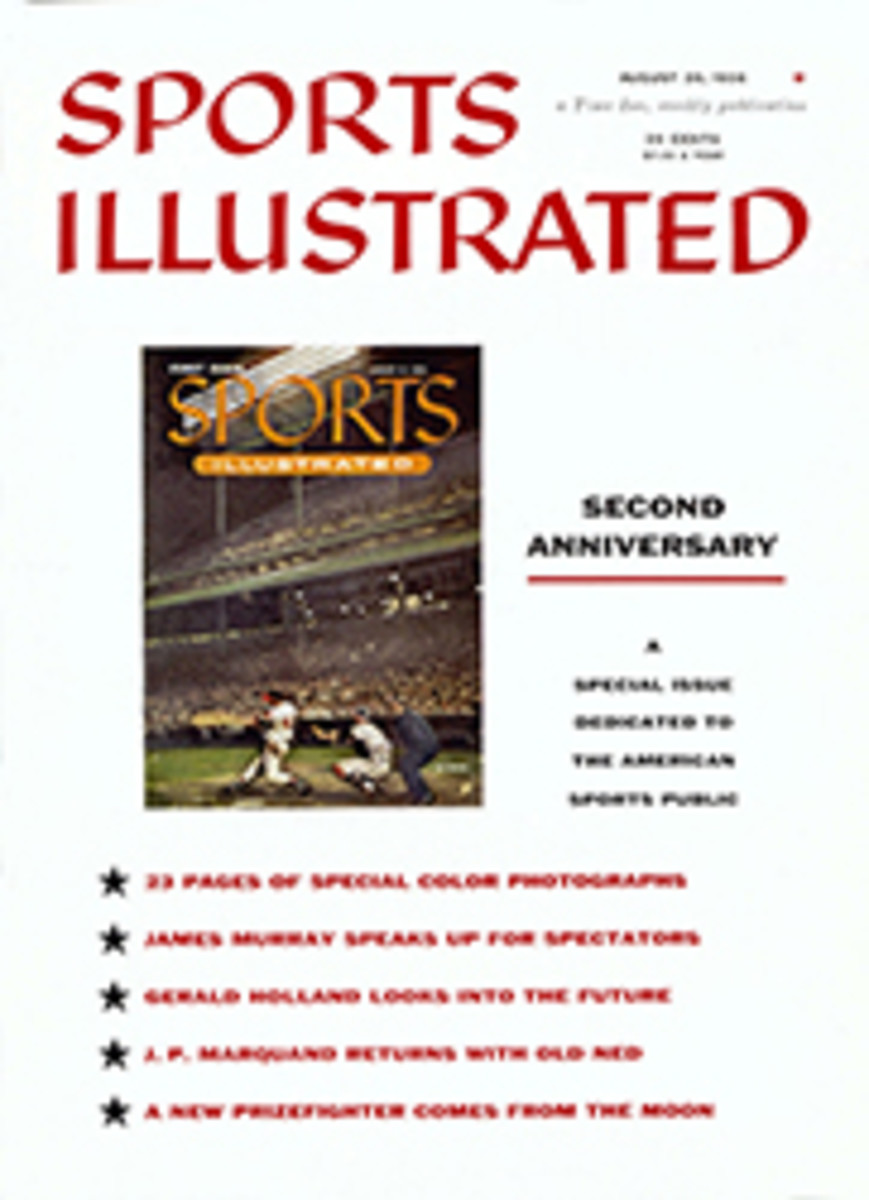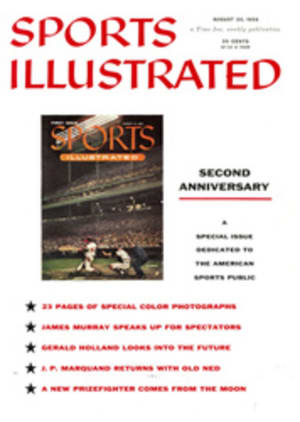
'NOBODY FALLS ASLEEP ON SUNDAY AFTERNOON'
It's funny, the sort of thing that catches your eye when you've been away for a long time," said Foreign Correspondent—and SPORTS ILLUSTRATED's Bonn correspondent—Jim Bell in New York the other day after a long tour in West Germany. "I've been around New York and back to my home state of Kansas for a visit, and the thing that really struck me wasn't the prosperity or the new buildings. It's that there don't seem to be any fat people in the United States, and nobody seems to have big Sunday afternoon dinners any more. The Germans are getting fat again. But here everybody looks thin to me. Nobody falls asleep on Sunday afternoon—they all seem to be out tearing around somewhere."
Millions and millions of U.S. citizens are indeed out tearing around somewhere on Sunday afternoon, although the transition between today's astounding preoccupation with participant sport and the comatose sort of off-the-job living which largely prevailed even in the fabulous 1920s has been so natural and so much fun that the change has gone almost unnoticed by those who have brought it about. The brightly dressed and casual people in the color photograph on the opposite page—like the participating sportsmen and women on the pages which follow—are a fine example, although it is doubtful that a big Sunday dinner has crossed their minds, and they are not, obviously, astounded to find themselves sitting in family groups on a lawn at New York's Shelter Island Yacht Club after a day of deepwater sailing.
They typify, however, one of the greatest of postwar changes, not simply in sport but in the concepts of the American people; a man does not begin climbing mountains or fishing or sailing without changing a little himself, and never, anywhere in the world, have so many new people discovered so quickly the pleasures, disciplines and rewards of ardent participation in sport. Long Island's yachtsmen are now but a fraction—albeit an exceedingly competent and beautifully equipped fraction—of those who enjoy the nation's waterways. Twenty-five million people are on the water in five and a half million pleasure craft this year; there are yacht clubs and boating organizations and moorings on lakes and rivers all across the country—even in western desert canyons where streams have been dammed by hydroelectric projects, just as there are scores of little, member-built, member-mowed golf courses across the farm lands of the prairie states.
The rush to participant sport not only gains new impetus but seems to broaden and change as it goes on. There are, for example, about 500% more skiers in the U.S. now than there were 15 years ago. But there is something static about such figures; one need only remember the clumsy—and clumsily clad—early enthusiasts who pioneered skiing in this country to realize how much skiers and their sport have improved in growing. When a man or a woman buys a fishing license or a Star boat or a bowling ball, when he grows interested in bird watching or camping, he is only beginning something and may very well spend the rest of his life attempting to excel at it. In fact, perhaps the most unique quality of the American sportsman is his urge to excel in both performance and equipment.
A great deal of the fascination in any participant sport lies in the fact that the man who embraces it is competing, basically, against himself. A pink Hendrickson, dropped lightly as a feather on some tree-hung eddy of water, may not bring up a trout, but the man who dropped it there can treasure the memory of a perfect cast and reflect on the years of practice which gave his wrist its cunning. Most people who fish or play golf or tennis, who sail, drive sports cars, ski, shoot a bow, hunt or bowl in the U.S. are not athletes in the accepted sense at all—a great many of them are far beyond the age of competitive athletics, for one thing—but millions of them, in the last few years, have attained a surprising degree of competence as well as enormous satisfaction.
Simply by applying themselves to their sport they have improved the sport itself in almost every instance; there are new swimming pools, new ski slopes, new mountain campsites, improved outboard motors, new fishing rods, reels and lines, new courses, courts and alleys and new sports clothing of every conceivable kind because millions of people have forced them into being by the steady pressure of their interest.
But if the new participants are leaving their mark upon the practices and trappings of sport—and rediscovering the winds and tides and vistas of the North American continent in the process—sport is also working its changes on them and the atmosphere in which they live. A banker rounding a buoy, a stenographer on horseback, a mechanic in a duck blind can all savor—even in the age of the desk, the lathe, the tractor and the split-level-with-mortgage—that expansiveness of spirit, that sense of uniqueness, which have always been the hallmarks of a full and satisfying life.
PHOTO
PHOTO
As the sunlight gives them a golden frame of leaves, the riders on a bridle-path in Central Park are within earshot of New York traffic—and a world away
PHOTO
Knee-deep in the swift, silvery waters of a mountain stream, against a cool, green backdrop of overhanging trees, the trout fisherman meets his moment of truth
PHOTO
Golf's traditional unit the foursome, plays the eighth hole at the Old Warson Country Club in St. Louis, a new course already ranked among the best in the U.S.
PHOTO
On one of the summer's perfect Sunday afternoons, a young tennis-playing couple solves the baby-sitter problem by bringing the baby along to the courts of a nearby park
PHOTO
His decoys artfully positioned, the duck hunter stands ready behind his cover as dawn breaks over a lake in Texas to light a vivid and treasured moment of the great outdoors
PHOTO
After a mile hike from Blue Ridge Parkway in North Carolina, touring motorists get rare sunlit view of The Cascades, in shade for most of day

